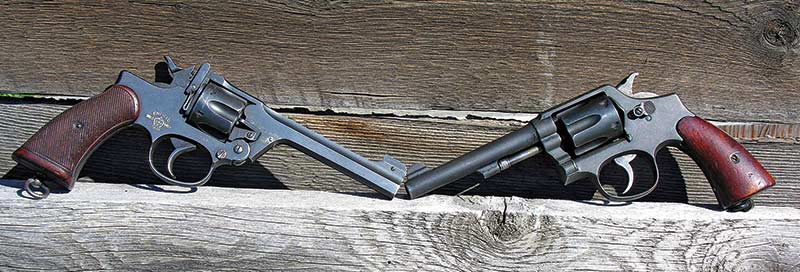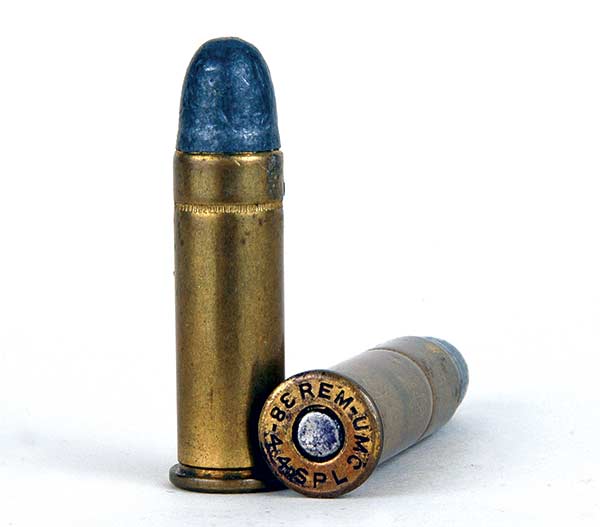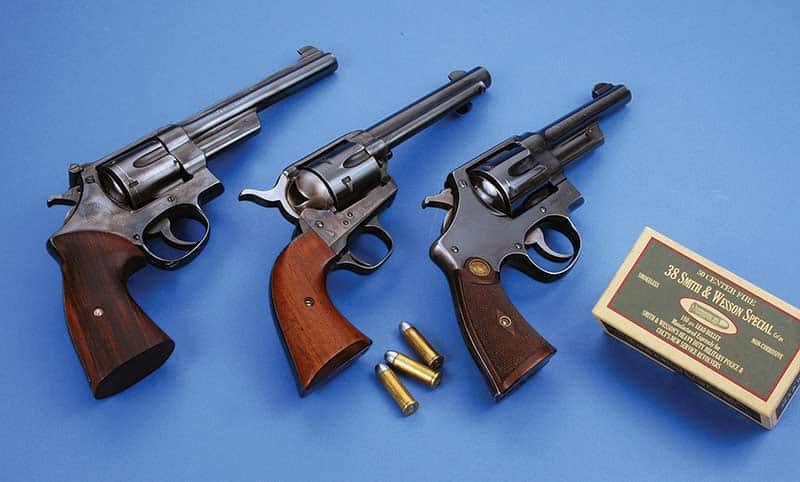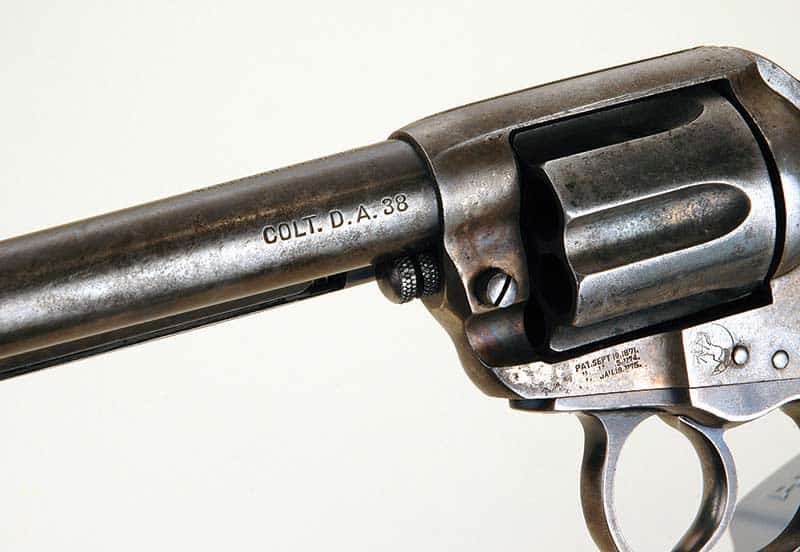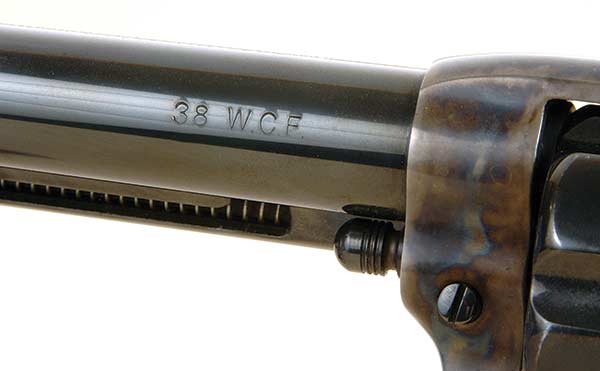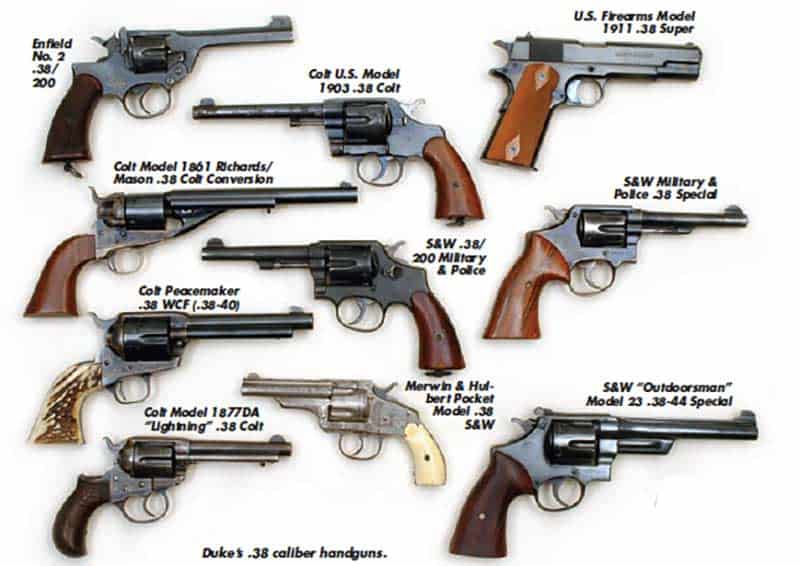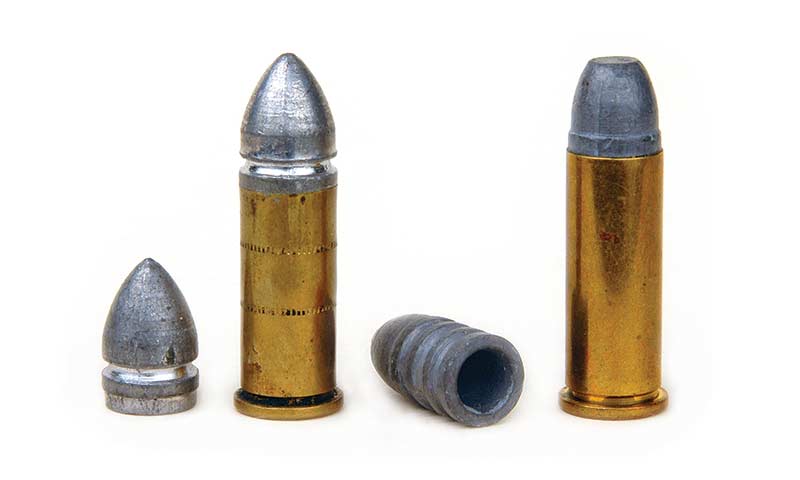Month: February 2024
Left: Enfield No. 2
Right: S&W M&P
There has been a passel of .38s since the first metallic cartridge one was introduced in the early 1870s. There have been puny ones and snorty ones; rimfires and centerfires, civilian ones and military ones. Some .38s were meant only for revolvers and some only for autoloaders, but some of the revolver .38 cartridges ended up in autoloaders anyhow. Some .38s were indeed .38s but most were .35 caliber; at least one was .36 caliber, and one other was .40 caliber. There have been .38 Shorts and .38 Longs, .38 Specials and .38 Autos, .38 S&Ws and .38 Colts.
There is even a .38 Super, but there has never been a .38 Magnum despite what many mystery and crime novel hacks have written. That said there indeed has been a “.38 Magnum” in performance if not in name. Some .38 handguns, both revolvers and autoloaders, are awesomely accurate, and some .38 handguns, most usually revolvers, are much less accurate and I’ll explain why shortly. Most people in the know about such things consider the .38 Special as the minimum revolver cartridge that should be used for home/self defense. And I know for certain it is about the largest cartridge non-enthusiast people can be taught to shoot with any degree of proficiency.
About the first one of note was the .38 Colt, and it indeed used a .38 caliber bullet or pretty close to it. It came out about 1874 for Colt’s New Line pocket revolvers but it was also almost instantly put into what are called “conversions” although they really weren’t. (See Shooting Iron in this issue for details.) Then in 1877 Colt introduced their little double action .38 “Lightning” — so named by a distributor, not by Colt.
Now understand this; Colt bored the barrels of those early .38s with .375 inch groove diameters, which is nominally equivalent to their previous cap & ball .36 caliber revolvers. Then the ammunition was built with outside lubed, heel-type bullets running from about .376″ to .380″ in diameter. Cases were only about .88″ in length and held about 18 grains of black powder.

These are some but not all of the .38 caliber cartridges that have been introduced
since the 1870s. From left: .38 Short Colt (note heel-type outside lubed bullet), .38
Long Colt, .38 S&W Special, .38 S&W Special Super Police load with 200 grain bullet,
.38-44 Special, .38 Special US Military load with FMJ tracer bullet, .38 S&W, .38 Colt
New Police (interchangeable with .38 S&W), .38/200 British Military with FMJ bullet,
.38 Auto, .38 Super, and .38 WCF (.38-40).
Transition Time
About 1892 the U.S. Army decided it needed to transition from the big Colt SAA .45 that had been its standard for nearly 20 years, and they wanted not only a double action revolver, but a .38. For 17 years they depended (not solely) on various marks of a Colt .38 DA. My sample is the U.S. Army Model 1903, and sure enough it still has the .375″ barrel groove diameter.
But what is confusing is the U.S. Army determined there was a better system than the .38 Colt with its outside lubed, heel bullet. So they built the ammunition to have a .357″ diameter bullet to fit inside the cartridge case, but they had to lengthen the case to 1.03″ in order to still get 18 grains of black powder in there. What about shooting a .357″ bullet down a .375″ barrel? Well the military minds of that
day were still familiar with Civil War type Minie balls with their deep hollow bases, so they built the new .38 Colt bullets with the same so they would expand and engage the rifling of those .375″ barrels. The revolvers and their ammunition weren’t world class shooters, but actually not too bad — at least in terms of accuracy, if not stopping power.
Thusly the .38 Colt became the .38 Long Colt and is so head-stamped on modern brass, but let me know if you ever see a handgun stamped “.38 Long Colt.” I’ve never encountered one. Nominal ballistics for .38 Long Colt are about 750 fps with the 150 grain bullet. Now back to 1876, when Smith & Wesson introduced their first .38. It was loaded with a 146-grain bullet in a case only about .76″ long with about 15 grains of black powder. Supposedly that load pushed the 146-grain bullet to about 730 fps. Smith & Wesson chambered it in their excellent quality, medium frame, top break revolvers, of which the “Baby Russian” came first. Another excellent quality revolver to be chambered for the .38 S&W was Merwin & Hulbert’s little “twist-break” one. Later, that company even brought out their own little .38 M&H cartridge, but it’s
of no consequence whatsoever in the overall scheme of things.
However, so many other poor quality handguns were produced both in top break form and chambered for the .38 S&W that both gained a rather
negative aura. When Smith & Wesson dropped top break handguns altogether in the early 1900s and transitioned to side-swing double actions, the .38 S&W remained as a caliber option in their line up. Interestingly, whereas Colt and the US Government eventually decided on .357″ as proper bullet diameter for the .38 Colt, Smith & Wesson’s engineers gave its .38 a nominal .360″ bullet. Early in the 1900s Colt introduced a .38 New Police cartridge which was nothing more than the .38 S&W with a flat nose bullet. The two are completely interchangeable.
But Wait
The .38 story goes on, though. About 1928 the Brits decided their .455 Webley cartridge and its Mark VI revolver were too large for service use. Therefore, they adopted the little .38 S&W but loaded with a 200-grain bullet at only about 630 fps. The revolvers were named Enfield No. 2, and the cartridge the .380 Mk1. Later, because the Geneva Convention forbade the use of lead bullets, the Brits gave their little .38 a full metal jacket bullet which necessitated reducing bullet weight to about 178 grains. They actually kept such in service until well after World War II. Speaking of that conflict, as usual, we had to send the Brits guns and one was the Smith & Wesson Military & Police Kframe revolver. Since it was already being chambered for the .38 S&W, it fit their needs perfectly.
Now let’s back up again to 1899 when Smith & Wesson introduced the .38 S&W Special. That’s where confusion came in. Smith & Wesson’s .38s are similar, but the new .38 used a .357″ bullet. The earlier .38 S&W cartridge won’t chamber in .38 Special revolvers because it’s too fat. The new .38 Special was considered a real jump in power compared to the previous .38s. Its earliest loads used 21 grains of black powder with 158 grain bullets for about 850 fps. Only a few months after introduction, smokeless powder factory ammunition hit the scene too.
Smith & Wesson aptly named their K-frame revolvers “Military & Police.” They indeed served with both in the 1900s, with thousands being issued to US Navy and Marine aviators in World War II and probably millions being supplied to police departments nationwide. Until cops began to go semiauto in the 1980s, the .38 Special was the predominant law enforcement handgun caliber and had been so for about 75 years. And of course it was so inherently accurate, the bullseye target shooters used it as a standard. That’s where the revolver cartridge becoming an autoloader cartridge thing comes into play. Smith & Wesson produced their Model 52 semiauto for the .38 Special, but using only full wadcutter rounds.
And with the .38 Special is also where that .38 Magnum thing came from in terms of performance, if not in name. In 1930 police felt there was a need for more power from their revolvers so Smith & Wesson began chambering their big N-frames for a new .38 Special loading. It was called the .38-44 Special; meaning it was a more powerful .38 Special cartridge to be fired ONLY in revolvers built on a .44 size frame. The factory loads were even headstamped .38-44 Special, but interestingly the Smith & Wesson handguns themselves still just carried the .38 S&W Special caliber marking. That .38-44 factory load used the same 158-grain RN bullet as regular .38 Specials but propelled it at 1,150 fps.
Today’s factory loaded .357 Magnums with the same bullet weight travel about likewise.
An Auto
It was also cop needs that got .38 Automatic calibers going — or sort of. Colt actually introduced their first .38 Auto in 1900 for one of John Browning’s early autoloader designs — the Colt Model 1902. It used a 130- grain FMJ bullet at about 1,100 fps. That’s kind of impressive ballistics considering Colt only started to warranty their big Single Action Army revolvers for smokeless powders that same year.
Then in 1928 with the law enforcement desire for more power, they upped velocity of the .38 Colt Auto to 1300 fps with the same bullet and then named it *.38 Super. That round was only supposed to be used in newly made Model 1911s and NEVER in the old Model 1902. That said, the only visible differences between the two rounds was that the Super used nickel-plated brass and the older one used plain brass cases and
one was headstamped .38 Super and the other .38 Auto.
And let’s not forget that .38 caliber that is actually a .40 caliber. That one is the .38-40, which actually first arrived named the .38 Winchester Centerfire (WCF). Winchester brought it out as a lever gun round in 1879 for their Model 1873 rifles and carbines. Colt started chambering it in their SAA and Model 1878DA in 1884 and it was also popular in their New Service double action, which hit the market right about the turn of the 19th/20th centuries. For some reason Winchester named this round “38” although it’s not. Bullets for it have always been .40 caliber, and its bottlenecked case is huge compared to any other .38 caliber handgun cartridge. Factory loads circa 1899 carried 38 grains of black powder with 180 grain lead bullets. That resulted in velocities of over 900 fps from 71⁄2″ revolver barrels. If you actually want to consider the .38-40 as a .38 caliber handgun cartridge then it certainly was the most powerful of the lot. Interestingly, it’s also an exact ballistic twin for today’s .40 S&W.
Anyway, like so many of you I got my handloading start with the .38 S&W Special, firing my new homemade loads in a S&W K-38. In those years I quit counting after having loaded over 50,000 .38 Specials. As my interests led me to Old West guns I also acquired and loaded for .38 Colt and .38-40 revolvers. Now in assembling a collection of World War II firearms I find myself shooting and loading for both a British Enfield No. 2 and a Smith & Wesson Military & Police chambered for their .38/200. Seems like I can’t get away from .38s!


In Hawaii, a man who was peacefully carrying a pistol for his own self-protection while on a nature hike was arrested and subject to felony prosecution under state laws that generally confine the possession of guns and ammunition to one’s own home or premises.
The man, Christopher Wilson, invoked the Second Amendment and Hawaii’s constitutional right to arms (with wording identical to the Second Amendment) in his defense. Wilson prevailed on these claims in the lower court, and the state appealed to the Hawaii Supreme Court.
There, the court disparaged Wilson’s federally-guaranteed right to bear arms and denied him standing to challenge the state’s license to carry law, even though the state illegally refused to issue licenses during the relevant time period.
In doing so, the court openly mocked the U.S. Supreme Court’s Second Amendment jurisprudence; adopted dissenting language as binding law; and cited a television show and the Aloha Spirit” in its “reasoning.”
The opinion in State v. Wilson thus makes plain the thinly-disguised refusal anti-gun states have shown to complying with the Second Amendment. The anti-gun media is likewise dropping its usual pretense to celebrate this act of judicial rebellion.
We have written extensively about the open defiance anti-gun states have shown to the U.S. Supreme Court in the wake of its decisions recognizing and elaborating upon the individual right to keep and bear arms protected by the Second Amendment.
To summarize, each time the Supreme Court has issued an opinion upholding this right, anti-gun states have responded by passing laws that make obtaining and lawfully using firearms more difficult, more expensive, and less practical for law-abiding people.
They have also insisted that existing laws passed under the pretext that no individual right existed under the Second Amendment were somehow nevertheless perfectly consistent with that right.
Then, when they add even more burdens to those laws after the individual right is articulated in binding case law, they invoke “public safety” to justify measures that have nothing to do with antisocial behavior.
This charade – as transparent, tiresome, and aggravating as it is – has nevertheless provided one opportunity after another for the U.S. Supreme Court to build upon its Second Amendment rulings.
Since 2008, with the landmark decision of District of Columbia v. Heller, firearm prohibitionist have gone 0 for 4 before the high court. One other case was favorably mooted for their side, but that merely set up an epic loss for them two years later in New York State Rifle & Pistol Association v. Bruen, which recognized the right to carry firearms in public for self-defense.
This has made prohibitionists increasingly furious, vengeful, desperate, and defiant. Yet that defiance has largely operated within the pretext of regular order, in which lip service is paid to complying with the law and to the ultimate authority of the Supreme Court in construing the U.S. Constitution and federal laws.
Wilson is notable not so much for ignoring or misapplying Supreme Court precedent – which is the typical modus operandi of prohibitionist judges – but for the openness of the contempt, disrespect, and rebelliousness it displays to superior judicial authority.
The legal profession is dependent upon norms of professionalism, civility, neutrality, and respect for established hierarchies. It has binding codes of conduct to enforce these norms, among which in Hawaii include the injunction to avoid falsely or recklessly impugning the integrity of judges or other legal officers.
Judges themselves are held to an even higher standard of conduct and must avoid even the “appearance of impropriety.” To be sure, the profession does not always live up to the letter or spirit of these norms, but they remain an important safeguard in upholding the legitimacy of the legal system. After all, if a person cannot resort to the judicial system to peacefully adjudicate disputes or violations of vested rights, what options are left?
Ironically, one of the best sources in explaining just how far afield the Wilson opinion is of these norms is an article published by the anti-gun media organ Bloomberg News (the namesake of which, Michael Bloomberg, is a leading funder and advocate of the firearm prohibition cause). That article also abandons the norms that once applied to the profession it represents and unreservedly cheers what it calls the Hawaii Supreme Court’s declaration of “war.”
The article is headlined “Hawaii Rightly Rejects Supreme Court’s Gun Nonsense.” It begins with the assertion, “Blue states are not generally known for attacking the federal government or running rogue programs in defiance of federal law,” an implicit acknowledgement that what is to follow is an example of exactly that.
Yet even as the article manages a disparaging reference to “an insurrectionist who wants to be president,” it takes the side of state justices whose “frustration” with the Supreme Court “flowed like lava from an angry volcano” and who rejected any obligation of “deference” or even “basic respect.”
But it’s not just the opinion’s unusual tone that earns the approval of Bloomberg’s scribe. “Hawaii declared Bruen null and void in the Aloha State,” the article continues, a move it characterizes as “an open display of contempt.” It goes on: “The purpose of the Hawaii opinion … is not merely to shame the passengers of the constitutional clown car in Washington. It’s to declare war on the chaos that they enable.”
The article also indulges in its own swipes at the Supreme Court, criticizing its purported “hackishness” and seething, “The US Supreme Court is perhaps best understood as an old-school ward heeler who dresses Christmas turkeys for the neighborhood partisans in highfalutin words.” It concludes by calling the Supreme Court’s Second Amendment jurisprudence a “game” the “Hawaii Supreme Court seems to be finished playing.”
Temper tantrums may provide a temporary catharsis for weak-minded individuals with low impulse control. Rarely, however, do they prevail where serious people are engaged in the mature business of making consequential decisions. Hopefully Mr. Wilson’s case eventually lands before such a tribunal, for it is his right as an American – and those of his fellow Hawaiians – that are the casualty of those actors in the state and media who believe their indignation is a law unto itself.
